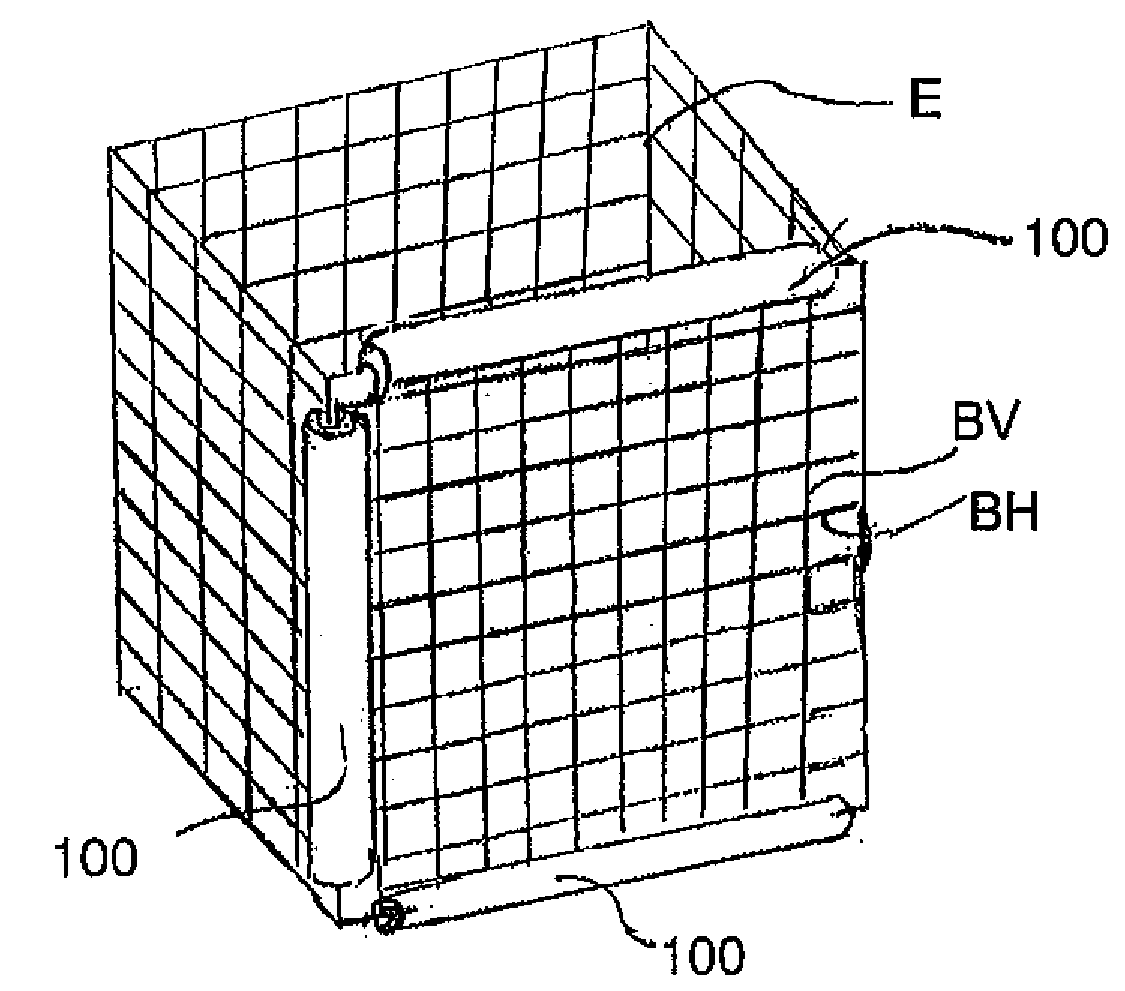Edge Protector For Wire Mesh Enclosure
a wire mesh enclosure and protective technology, applied in the field of edge protectors, can solve the problems of lobster traps that are routinely subjected to rough handling, affecting the life of cages, and affecting the safety of cages, so as to minimize the deformation of the mesh structure, extend the useful life of the cage, and minimize the effect of deformation
- Summary
- Abstract
- Description
- Claims
- Application Information
AI Technical Summary
Benefits of technology
Problems solved by technology
Method used
Image
Examples
Embodiment Construction
[0015]The present invention will now be described more fully in detail with reference to the accompanying drawings, in which the preferred embodiments of the invention are shown. This invention should not, however, be construed as limited to the embodiments set forth herein; rather, they are provided so that this disclosure will be complete and will fully convey the scope of the invention to those skilled in the art.
[0016]FIGS. 1-4 illustrate an edge protector 100 according to the invention, which is a hollow tube 102 that has been adapted to snap onto mesh bars B of a wire mesh enclosure E. FIG. 4 shows the edge protector 100 mounted on a horizontal and on a vertical edge of the wire mesh enclosure E. The wire mesh enclosure E is constructed of intersecting bars B. In the embodiment shown, the intersecting bars include horizontal bars BH and vertical bars BV that intersect with each other to form an evenly spaced grid. It is understood, that other configurations of intersecting bar...
PUM
 Login to view more
Login to view more Abstract
Description
Claims
Application Information
 Login to view more
Login to view more - R&D Engineer
- R&D Manager
- IP Professional
- Industry Leading Data Capabilities
- Powerful AI technology
- Patent DNA Extraction
Browse by: Latest US Patents, China's latest patents, Technical Efficacy Thesaurus, Application Domain, Technology Topic.
© 2024 PatSnap. All rights reserved.Legal|Privacy policy|Modern Slavery Act Transparency Statement|Sitemap


